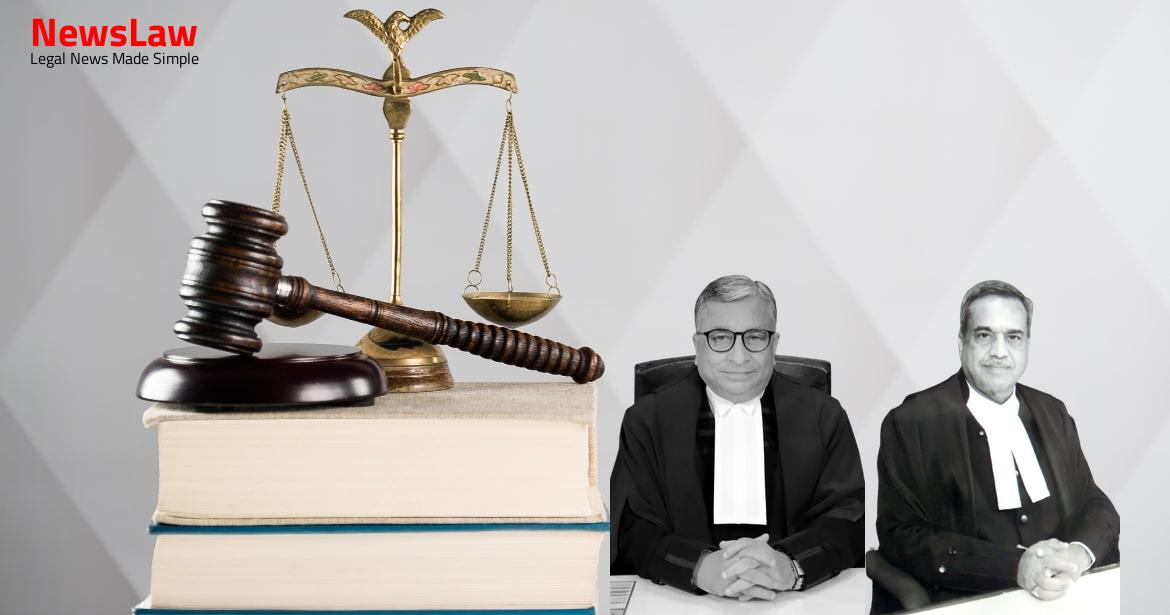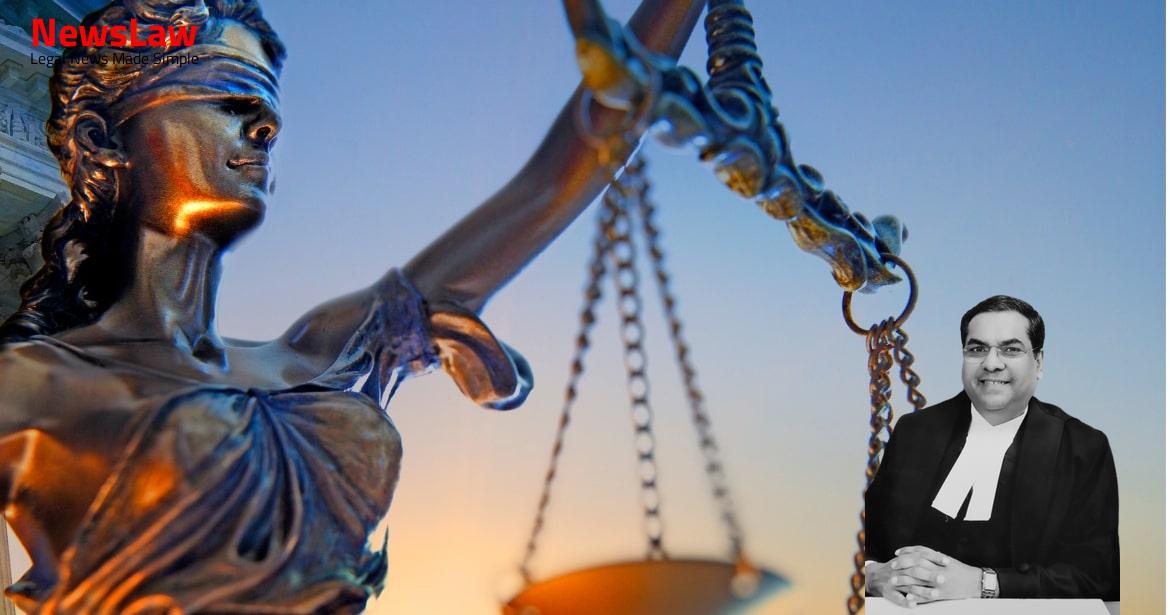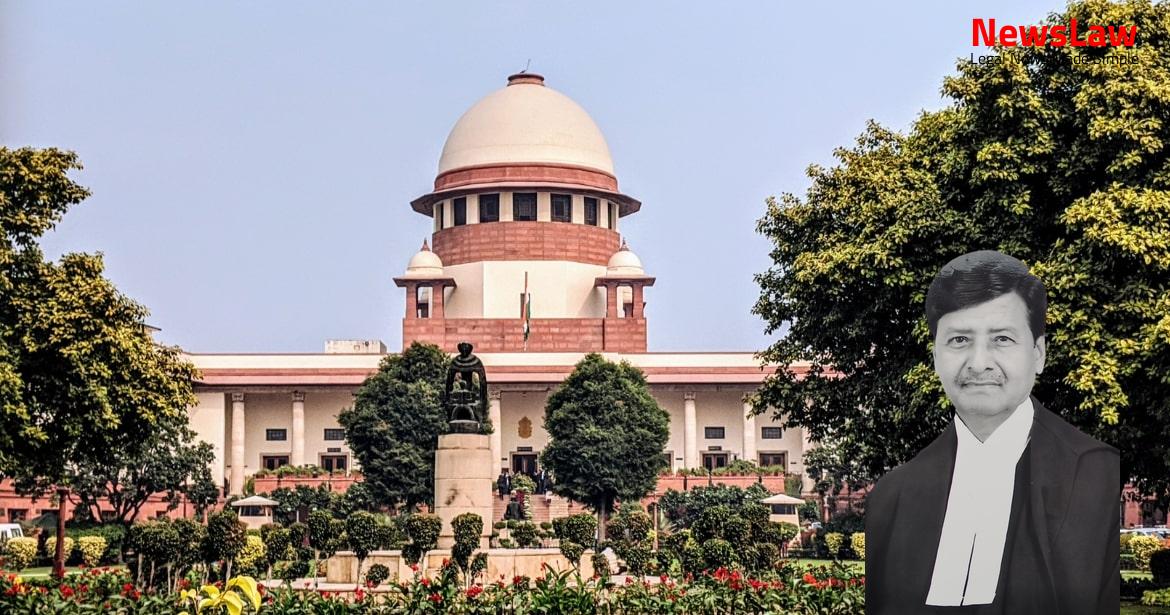The recent High Court ruling on the District Magistrate’s powers under the SARFAESI Act provides valuable insights into the administrative role of the designated authority. By setting aside an order and emphasizing prompt action for asset possession, the court’s legal analysis clarifies the ministerial nature of Section 14 proceedings. Explore our blog to understand the nuanced approach taken by the court in upholding the efficiency of secured asset recovery. #LegalAnalysis #SARFAESI #HighCourt
Facts
- The Division Bench of the High Court has allowed the writ petition no. 9749/2021
- The decision overturns the previous ruling
- The specific reasons for allowing the petition are not provided in the given context
- Religare sanctioned a loan of Rs. 6 crores to the borrowers.
- The borrowers defaulted on the loan, leading to it being classified as a Non-Performing Asset (NPA).
- Religare took symbolic possession of the secured assets under Section 13(4) of the SARFAESI Act.
- The designated authority declined to assist the secured creditor in taking possession of the secured assets.
- The order of the designated authority was challenged and set aside by the High Court.
- The High Court directed the designated authority to dispose of the application under Section 14 of the SARFAESI Act afresh.
- Legal heirs of a tenant of the mortgaged property filed a Special Leave Petition.
Also Read: Challenging Legal Presumptions in Negotiable Instrument Cases
Issue
- The issue in question is whether the District Magistrate/designated authority could pass an order under Section 14 of the SARFAESI Act requiring the termination of tenancy rights of a third party before deciding on the application.
- The High Court set aside the order passed by the Additional District Magistrate, leading to the current Special Leave Petition.
- The scope, ambit, and jurisdiction of the District Magistrate/designated authority under Section 14 of the SARFAESI Act need to be considered in addressing this issue.
- Section 14 of the SARFAESI Act outlines the powers of the Chief Metropolitan Magistrate or District Magistrate to assist secured creditors in taking possession of secured assets.
Also Read: Legal Analysis of Admission Irregularities in Educational Institutions
Arguments
- Reliance on the decisions of the Court in Harshad Govardhan Sondagar Vs. International Assets Reconstruction Company Limited and Vishal N. Kalsaria Vs. Bank of India.
- Argument by Shri Navare that the rights of the tenants should be protected unless eviction proceedings are initiated.
- Claim by the petitioners that they were tenants of the original landlord for some of the secured assets.
- Emphasis on the fact that the secured creditor must initiate legal proceedings for eviction before seeking possession under Section 14 of the SARFAESI Act.
Also Read: Quashing of Enhanced Tuition Fee in Private Medical Colleges
Analysis
- The SARFAESI Act empowers secured creditors to take possession of securities and sell them without court intervention.
- The Act aims to improve recovery of defaulting loans and reduce non-performing assets in banks and financial institutions.
- The process under Section 14 of the SARFAESI Act is ministerial and does not involve adjudication on borrower’s objections.
- The CMM/DM must act promptly upon receipt of written application from secured creditors for possession of secured assets.
- Failure by the borrower to discharge liabilities may lead to measures under Section 14(4) including asset transfer or sale.
- The CMM/DM is required to act within specified time limits and may use necessary force as enabled by Section 14(2).
- Possession of secured assets can be taken by the secured creditor before and after sale confirmation, using authorised officers.
- The Act enables financial institutions in India to have similar powers as international banks for asset recovery and reconstruction.
- The primary aim of the SARFAESI Act is to ensure efficient realization of assets and reduce non-performing assets within financial institutions.
- The CMM/DM’s role under Section 14 is administrative, with an emphasis on prompt action for possession of assets.
- The District Magistrate or the Chief Metropolitan Magistrate is required to pass suitable orders for taking possession of secured assets within thirty days from the date of application.
- If no order is passed within thirty days due to reasons beyond control, the order can be passed within an additional period of up to sixty days.
- There is no need to file an affidavit for proceedings pending before any District Magistrate or Chief Metropolitan Magistrate on the date of commencement of the Act.
- The District Magistrate or Chief Metropolitan Magistrate is empowered to take possession of assets and documents relating to them upon request from the secured creditor.
- An affidavit must be filed by the authorised officer of the secured creditor along with the application, declaring relevant financial information.
- The District Magistrate or Chief Metropolitan Magistrate may authorize subordinate officers to take possession of assets and documents.
- The District Magistrate or Chief Metropolitan Magistrate can take necessary steps and use force as deemed necessary for compliance.
- Any action taken by the District Magistrate or Chief Metropolitan Magistrate under this section cannot be challenged in court.
- The powers exercisable by CMM/DM under Section 14 of the SARFAESI Act are ministerial and do not involve an adjudicatory process.
- Once all requirements under Section 14 are fulfilled by the secured creditor, it is the duty of CMM/DM to assist in obtaining possession without adjudicating disputes.
- Any disputes are to be raised in proceedings under Section 17 before the Debts Recovery Tribunal.
- The High Court correctly set aside an order keeping an application pending until legal eviction proceedings were initiated by the secured creditor.
- Reliance on the Harshad Govardhan Sondagar case is not applicable as it pertains to notice and hearing, not adjudication of rights.
- The Vishal N. Kalsaria case does not apply as it dealt with conflicting laws, not the powers under Section 14 of the SARFAESI Act.
- The banking industry in India is complying with international norms, but there are areas with unequal playing fields.
- A recent decision in the case of M/s R.D. Jain and Co. vs. Capital First Ltd. discussed the powers of District Magistrate/Chief Metropolitan Magistrate under Section 14.
- One cannot pick up a word or sentence from a judgment to construe it as the ratio decidendi on the relevant aspects of the case.
- The High Court did not commit any error in its judgment and order directing the designated authority to dispose of the application under Section 14 of the SARFAESI Act.
- The opinion is in complete agreement with the view taken by the High Court.
Decision
- The Special Leave Petition has been dismissed by the court.
Case Title: BALKRISHNA RAMA TARLE DEAD THROUGH LRS Vs. PHOENIX ARC PRIVATE LIMITED (2022 INSC 1022)
Case Number: SLP(C) No.-016013 / 2022



